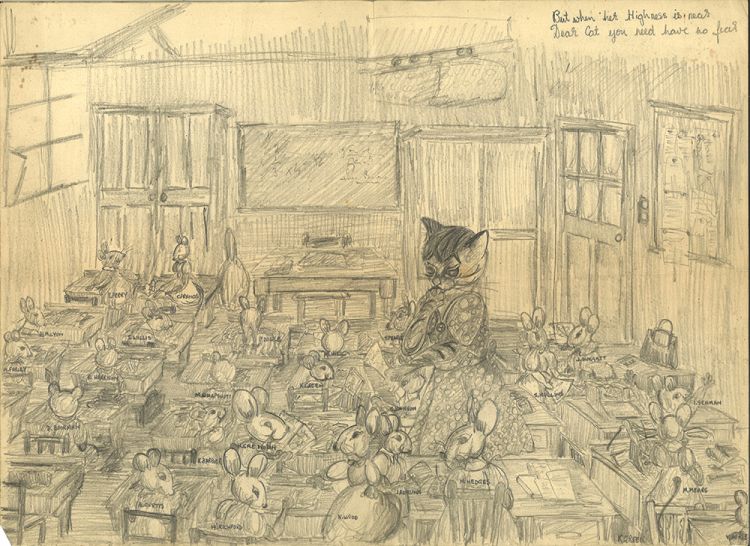St Martin’s Church, Epsom, was filled on Friday 15th August as the borough came together to mark the 80th anniversary of VJ Day – the end of the Second World War in the Far East. The service, organised by the Royal British Legion’s Epsom and Ewell branch, brought together civic leaders, veterans, families, choirs and the wider community to commemorate those who served and those who never came home.
The service was led by Revd Nick Parish, who in his opening prayer set the tone:
“God, our Father, in the dying and rising of your Son, Jesus Christ, you have brought life and salvation out of cruelty and death. We mark VJ Day in gratitude for the courage of the allied forces who suffered for freedom in the Far East campaign, and in sorrow for all that hinders the coming of your kingdom of peace. Give us wisdom to learn from the bitter memories of war and hearts that long for the unity of all nations.”
A personal touch from local families
Among the most moving contributions came from Mrs Sheila Carlson-Berry, who read extracts from her late father Douglas Fletcher’s letters home from Burma. Fletcher, who had volunteered for the RAF at 19, wrote more than 250 letters to his sweetheart Sylvie during his service.
From October 1944 he wrote with cautious optimism:
“I suppose by the time you receive this European war will be just about finished. What a wonderful thought. It must make the people at home very happy… loved ones at home free from all danger. That, of course, is the main reason for our joy. The other is that now we can have the men and materials out here to put an end to this.”
In another letter, he reflected on the “forgotten” nature of the Burma campaign:
“Most people don’t realise there’s a war on out here. It’s only the people who have someone here that understand what is happening. The children have suffered most. It will take years to erase horrible memories from their minds. Man’s inhumanity to man – a terrible war, isn’t it?”
By August 1945, as the atomic bombs fell on Japan, Fletcher wrote with relief:
“So it’s all over. Hard to believe, isn’t it? It came so suddenly, but there it is. It will make things so much easier… Yes, the atomic bomb is a terrible weapon, but I think we have it to thank for the Jap surrender… I sincerely hope it will be the last war on this earth. War is too terrible a business. So many innocent people have to suffer.”
Sheila told the congregation: “As you probably guessed, Douglas is my dad. Sylvie, my mum. He never forgot his comrades. Each Remembrance Day, I went with him to Westminster, and he cried as he planted a cross in the garden for his friend and pilot, Godwin Scudamore, who didn’t make it home.”
The stories of Epsom’s fallen
Cllr Dr Graham Jones MBE and the Lord Lieutenant of Surrey, Michael Molyneux, read researched accounts of four Epsom men who lost their lives in the Far East campaign.
- Sergeant Jack Cannon, Royal Artillery, died 28 February 1944 aged 30 at Imphal, India: “Jack married Nora Rush in 1940, and a year later their son Anthony was born. After just a year with his family, Jack was sent to India… He was killed in action during a Japanese attack and later interred at the Commonwealth War Graves cemetery in Imphal. His widow Nora requested the inscription: ‘To a beautiful life came a sudden end, and he died as he lived, everyone’s friend.’”
- Corporal Lionel William Murray, Dorset Regiment, killed at the Battle of Kohima, 4 May 1944, aged 28: “Before the war he lived with his mother in Langley Vale. He was evacuated from Dunkirk, then sent to India to train in jungle warfare. At Kohima he fought in bitter hand-to-hand combat and was killed in action. His gravestone reads: ‘In loving memory of a beloved son and brother. Rest in peace.’”
- Lance Bombardier Alfred William Cates, Royal Artillery, died of cholera 26 July 1943 aged 42: “Stationed in Singapore, he was taken prisoner in February 1942 and sent to work on the notorious Thailand–Burma Death Railway. His widow Emma chose the words: ‘So young, so calm, so bright, I bid you, my dearest one, goodnight.’”
- Noel Seymour, RAF wireless operator, died 14 October 1943 aged 21: “Taken prisoner in Singapore, he too was forced to work on the Burma Railway, where some 30 prisoners died every day. Noel was one of them. He lies in Kanchanaburi War Cemetery in Thailand, and his name is remembered on the war memorial in this very church.”
Tributes from today’s leaders
Helen Maguire MP for Epsom and Ewell, whose grandfather had served in Burma, spoke of both the past and her own military service: “Those who served in the Burma campaign were referred to as the Forgotten Army, and today we remember them and we honour them… My grandfather fought in the Battle of Kohima, a brutal and decisive turning point in the war. Like many who served there, he never spoke of his experiences, but it was clear the war stayed with him for the rest of his life. I remember him today with pride, gratitude and honour.”
Maguire linked her own military service in Bosnia and Iraq to the experiences of those remembered:
“War is cruel and it affects innocent people. It’s something civilians should never have to live through. Today, I remember my grandfather and those he served with. I remember those who didn’t come home, and I remember too the lasting impact of service on families, on lives and on future generations. We give thanks for peace and pray for an end to wars.”
Community effort
Barb Warwick, principal organiser with the Epsom RBL, later thanked the many contributors, from choirs and standard bearers to the volunteers who served over 100 cups of tea and cake in St Martin’s Hall. She acknowledged the “wonderful trumpeter Mr Dennis Sexton” for sounding the Last Post, and Tom Davey representing 135 Squadron.
Warwick reflected that this was “almost certainly the last service of its kind” and praised those who helped plan the event, especially John Rogers and Revd Nick Parish: “You did them proud.”
Remembering the Forgotten Army
The commemoration at St Martin’s – once known as the “Burma Star church” – brought together personal memory, civic duty, and community remembrance. The letters of Douglas Fletcher, the stories of Cannon, Murray, Cates and Seymour, and the testimonies of descendants and leaders ensured that those from Epsom who served in the Far East will not be forgotten.
As the exhortation reminded the packed congregation: “We will remember them.”
You can watch the full service on this video link: Epsom and Ewell VJ Day Commemoration
Image: Barb Warwick of Royal British Legion Epsom and Ewell the principal organiser of the event.



